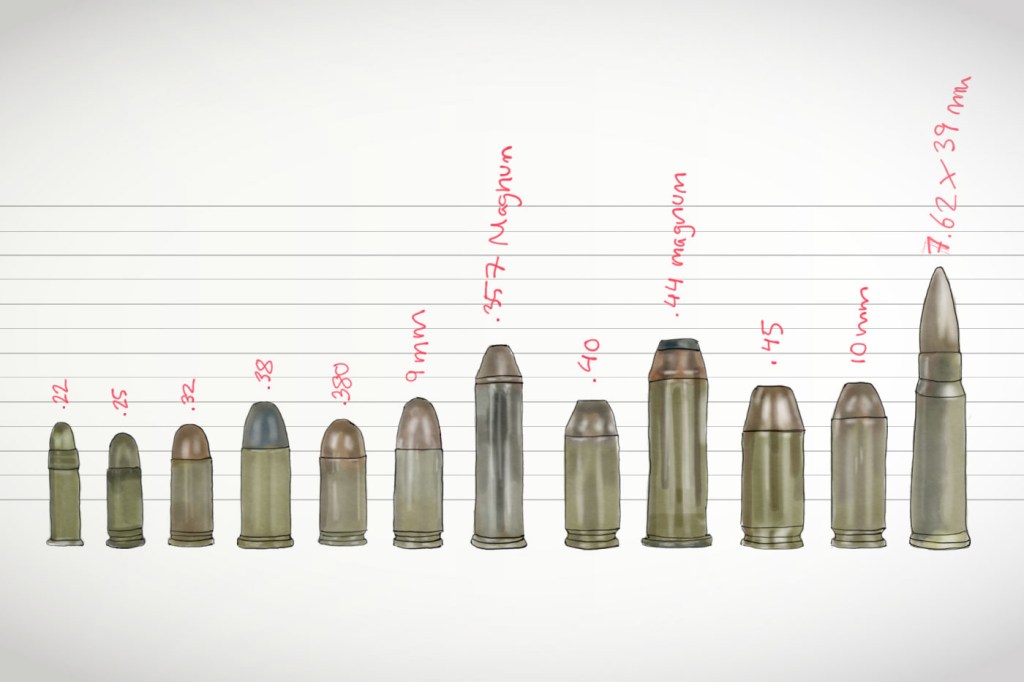New study on firearm caliber questions the notion that ‘guns don’t kill people’

“Our study gets to the heart of the notion that ‘guns don’t kill people; people kill people,’” said Anthony Braga, a Distinguished Professor of Criminal Justice at Northeastern. “That slogan is based on the contention that gun control is ineffective because if a person wants to kill someone, they will find a way to do it, no matter what types of weapons are available.”
The study, which was published in JAMA Network Open and funded by the United States Bureau of Justice Assistance, concludes that it is incorrect to dismiss firepower as a factor in shooting fatalities. The authors do not propose any specific gun control measures and acknowledge that both the intent of the shooter and chance also play a role in whether the victim lives or dies.

Anthony Braga is the director of the School of Criminology and Criminal Justice at Northeastern. Photo by Matthew Modoono/Northeastern University
But the study shows that gun caliber is also a significant factor in survival rates, according to co-author Philip Cook, professor emeritus at the Sanford School of Public Policy at Duke University.
“People who oppose gun control are not convinced that the type of weapon matters,” he said. “We are not saying caliber is more important than intent. What we show, very specifically, is that if you decrease the caliber of the guns, the number of deaths would drop by 40 percent.”
The study
The researchers divided the data into three groups based on the caliber of the guns used: small (22, .25, .32), medium (.38, .380, 9mm), and large (.357 magnum, .40, .44 magnum, .45, 10mm, 7.62x39mm).
Across a wide variety of variables, including age, gender, and criminal history, they found most variables to have insignificant differences between fatal and nonfatal cases. Three variables that had significant differences, however, were caliber, the location and number of wounds, and whether the shooting occurred indoors or outdoors.
For example, 90 percent of individuals involved in fatal shootings were male. Similarly, 93 percent of individuals involved in nonfatal shootings were male. This means there is an insignificant relationship between gender and likelihood of death.
Next, they wanted to rule out the possibility that the reason for the high deaths rate in high-caliber shootings is intent rather than the caliber—that people who are determined to kill buy higher-caliber weapons. To do this, they looked at variables associated with intent—number of shots fired, number of wounds, and whether the bullet hit a vital organ such as the heart or brain.
When they compared these variables across all three caliber groups, they found no significant difference. This confirmed that there was no significant difference in intent among the three groups—so caliber could be examined as a causal factor in the lethality of gun attacks.
Finally, to estimate the effects of caliber on the odds of death, the authors conducted an analysis that controlled for numerous shooting characteristics. They found that compared to shootings with low-caliber guns, the likelihood of death more than doubled in medium-caliber shootings and increased nearly five-fold in high-caliber shootings. The authors then ran a simulation that found that if the medium- and large-caliber guns were replaced by small-caliber guns, the result would have been a 39.5 percent reduction in homicides.
The authors concluded that when compared to small-caliber guns, the likelihood of death more than doubled in shootings that involved medium-caliber guns and increased by a factor of almost five in shootings that involved high-caliber guns.
“While it is true that people kill people, it is also true that guns kills people,” said Braga. “As such, gun control could matter in preventing homicides.”





